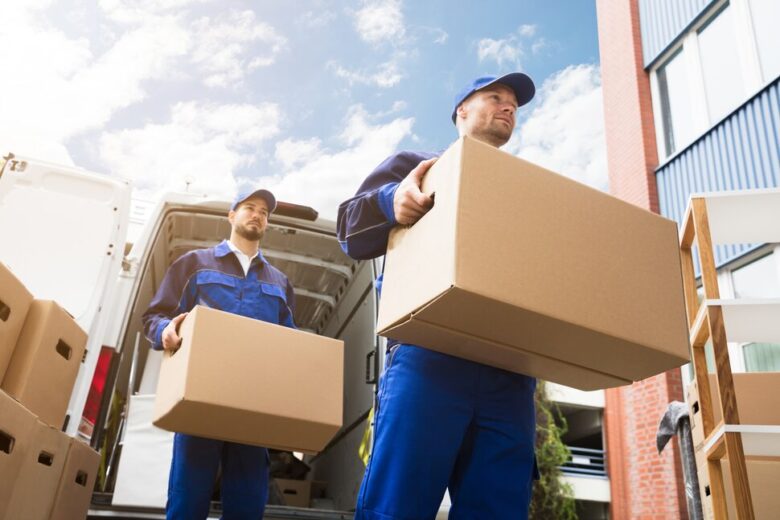Moving can be a stressful and overwhelming process, but it’s also an opportunity to make environmentally conscious choices that contribute to a more sustainable future. If you’re planning a move to New York City (NYC), you may be wondering how you can minimize your environmental impact and make your relocation as eco-friendly as possible. In this blog post, we’ll provide you with tips and strategies for a sustainable move in NYC, from packing to transportation and beyond.
Why Choose an Eco-Friendly Move?

Source: cleanchoiceenergy.com
Before we dive into the tips, let’s first understand why eco-friendly moving is important. Relocations, particularly long-distance moves, can generate a significant amount of waste, consume energy and water, and contribute to air and water pollution. Traditional moving practices, such as using excessive packing materials, utilizing single-use plastics, and relying on gas-guzzling vehicles, can harm the environment and exacerbate the climate crisis.
Choosing an eco-friendly move not only reduces your carbon footprint and minimizes waste but also promotes sustainable living habits that protect our planet for future generations. By making conscious choices during your move, you can reduce your impact on the environment, conserve resources, and contribute to a greener, healthier planet.
Tips for an Eco-Friendly Move in NYC

Source: trainerbubble.com
Declutter and Donate
One of the first steps towards an eco-friendly move is decluttering your belongings. Before packing, go through your possessions and donate or recycle items that you no longer need or use. Consider donating to local charities or thrift stores, or hosting a garage sale to give your items a second life. By reducing the amount of stuff you need to move, you can minimize waste and save on packing materials.
Use Eco-Friendly Packing Materials
Instead of relying on bubble wrap and plastic packing peanuts, opt for eco-friendly alternatives. Use recycled packing paper, biodegradable packing peanuts, or air-filled cushions made from recyclable materials. You can also use towels, blankets, and clothing to wrap fragile items, reducing the need for additional packing materials.
Rent Reusable Boxes or Use Recycled Cardboard Boxes
Rather than purchasing new cardboard boxes that will likely end up in the landfill after your move, consider renting reusable plastic moving boxes or using recycled cardboard boxes. Many moving box rental companies offer durable plastic boxes that can be reused multiple times, reducing the need for single-use cardboard boxes and minimizing waste.
Choose Green Transportation

Source: econonord.com
Transportation is one of the biggest contributors to carbon emissions during a move. If possible, choose environmentally friendly transportation options, such as using a moving company that utilizes electric or hybrid vehicles, or renting a biodiesel-powered truck. If you’re moving locally, consider using public transportation or a bike to transport smaller items. Carpooling with friends or neighbors who are also moving can also help reduce emissions.
Donate or Recycle Unwanted Items
Instead of throwing away items you no longer need, consider donating them to local charities or recycling them. Many organizations accept donations of gently used furniture, appliances, electronics, and other household items. If you have large items that cannot be donated, research local recycling programs to ensure they are disposed of properly.
Choose Green Cleaning Products
When cleaning your old and new home during the move, choose environmentally friendly cleaning products that are free from harmful chemicals. Look for products with eco-friendly certifications, such as the EPA Safer Choice label or third-party certifications like Green Seal or EcoLogo.
Reduce Energy Usage
During the packing and moving process, be conscious of your energy usage. Turn off lights, appliances, and electronics when not in use, and unplug chargers and other devices to avoid unnecessary energy consumption. If possible, choose a moving day that falls on a mild weather day to minimize the use of heating or cooling systems.
Opt for Digital Over Paper

Source: acodis.io
In the digital age, there are many opportunities to reduce paper waste during a move. Instead of printing out paper copies of documents, receipts, or contracts, opt for digital copies and store them on your electronic devices or in the cloud. You can also use online resources for change of address notifications, utility transfers, and other administrative tasks to minimize paper waste.
Choose Eco-Friendly Cleaning Solutions
When cleaning your old and new home during the moving process, opt for eco-friendly cleaning solutions. Avoid harsh chemicals that can harm the environment and choose natural alternatives, such as vinegar, baking soda, and lemon juice. There are also many eco-friendly cleaning products available in the market that are biodegradable and free from harmful chemicals.
Recycle Packing Materials
After your move, be sure to properly recycle all the packing materials that you used. Cardboard boxes can be broken down and recycled, and packing paper, packing peanuts, and other packing materials can be recycled or reused for future moves. If you rented reusable plastic moving boxes, return them to the rental company for reuse by others.
Consider Downsizing
Moving presents a great opportunity to downsize and reduce your belongings. Consider whether you need to bring all of your possessions to your new home, and donate or sell items that you no longer need or use. By downsizing, you can reduce the number of packing materials, transportation emissions, and waste associated with your move.
Research Green Moving Companies

Source: baileysallied.com
Look for moving companies in NYC that have environmentally friendly practices. Some moving companies use biofuel-powered trucks, have recycling programs, or offer reusable packing materials. Do your research and choose a moving company that aligns with your eco-friendly values.
Plan Efficient Routes
When planning your move, try to optimize your routes to minimize driving distances and reduce fuel consumption. Plan your route and choose the most efficient route to your new home. Avoid rush hour traffic or congested areas, if possible, to reduce idling time and fuel consumption.
Plant Trees or Start a Garden
Once you’ve settled into your new home, consider planting trees or starting a garden to offset your move’s carbon footprint. Trees absorb carbon dioxide, a major greenhouse gas, and release oxygen, helping to mitigate climate change. Starting a garden can also contribute to local biodiversity and provide you with fresh produce, reducing your reliance on transportation-intensive grocery store produce.
Choose Energy-Efficient Appliances
If you’re purchasing new appliances for your new home, opt for energy-efficient models that are certified by Energy Star or other reputable organizations. Energy-efficient appliances use less electricity or gas, reducing your overall carbon footprint and saving you money on utility bills.
Conclusion

Source: usnews.com
Moving can be stressful, but with the right strategies and conscious choices, you can make your move to NYC more eco-friendly and sustainable. Empire movers & Storage is offering eco-friendly and sustainable services. From decluttering and donating to using eco-friendly packing materials, choosing green transportation, and reducing energy usage, there are many ways you can minimize your environmental impact during the moving process. By making small changes, you can contribute to a more sustainable future while successfully relocating to your new home. Remember, every effort counts, and by choosing eco-friendly practices, you’re taking a step towards a greener and healthier planet. Happy moving!
